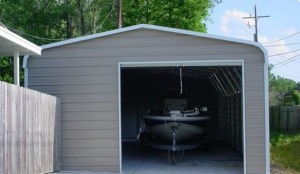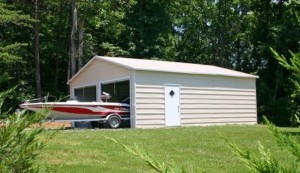Enclosed Boat Port Features and Options for RV Shelters and RV Covers
Enclosed Boat Port J.C.s Metal Building Sales shelters and enclosed boat storage buildings start off as a metal or steel boat carport. You can add a number of features to our products such as gable ends, side panels, and even storage buildings on the end of the unit. Many customers choose a boat canopy but we can also install a fully enclosed boat garages with garage doors and personnel doors. The enclosed boat storage buildings offer the greatest protection.
Enclosed Boat Port Why Buy RV Carports and RV Covers from J.C.s Metal Building Sales?
Customers tell us that they buy from us is because we have the best quality, service, and best prices and they want to protect their investment! Whether your investment is for a single boat shelter, canopy for multiple boats, jet skis, or an enclosed boat garage, our products offer long-term protection from the weather and the sun. We have 13 colors from which to choose which will certainly compliment your home or property’s curb appeal as well as add value to your property all while providing the best in protection for your boat or other watercraft.
Call us today at 1-386-277-2851 and we will help you select an affordable, quality Enclosed Boat Port.
A carport is a covered structure used to offer limited protection to vehicles, primarily cars, from the elements. The structure can either be free standing or attached to a wall. Unlike most structures a carport does not have four walls, and usually has one or two. Carports offer less protection than garages but allow for more ventilation.
Quoting from the Carport Integrity Policy for the Arizona State Historic Preservation Office:
As early as 1909, carports were used by the Prairie School architect Walter Burley Griffin in his design for the Sloan House in Elmhurst, Illinois (Gebhard, 1991: 110). By 1913, carports were also being employed by other Prairie School architects such as the Minneapolis firm of Purcell, Feick & Elmslie in their design for a residence at Lockwood Lake, Wisconsin. In this instance, the carport was termed an “Auto Space” (Gebhard, 1991: 110). The late architectural historian David Gebhard suggested that the term “carport” originated from the feature’s use in 1930s Streamline Moderne residences (Gebhard, 1991: 107). This term, which entered popular jargon in 1939, stemmed from the visual connection between these streamlined residences and nautical imagery. In the 1930s through the 1950s, carports were also being used by Frank Lloyd Wright in his Usonian Houses; an idea that he probably got from Griffin, a former associate.
Modern carports are typically metal (steel, tin, or aluminum) and are modular in style in the USA, while remaining flat-roofed permanent structures in much of the rest of the world. The carport is considered to be an economical method of protecting cars from the weather and sun damage, and tens of thousands are installed in the USA alone each year.
The term carport was coined by renowned architect Frank Lloyd Wright, when he began using the carport for the first of his “Usonian” homes; the house of Herbert Jacobs, built in Madison, Wisconsin, in 1936.
In describing the carport, he said to Mr. Jacobs, “A car is not a horse, and it doesn’t need a barn.” He then added, “Cars are built well enough now so that they do not require elaborate shelter.” Looking back at life in 1936, it is easy to imagine automobiles prior to this time were not completely water tight; the era of robotic-assembly, advanced materials, and perfect closure lines was still 50 years in the future.
The carport was therefore a cheap and effective device for the protection of a car. Mr. Jacobs added: “Our cheap second-hand car had stood out all winter at the curb, often in weather far below zero (Fahrenheit). A carport was a downright luxury for it.”

